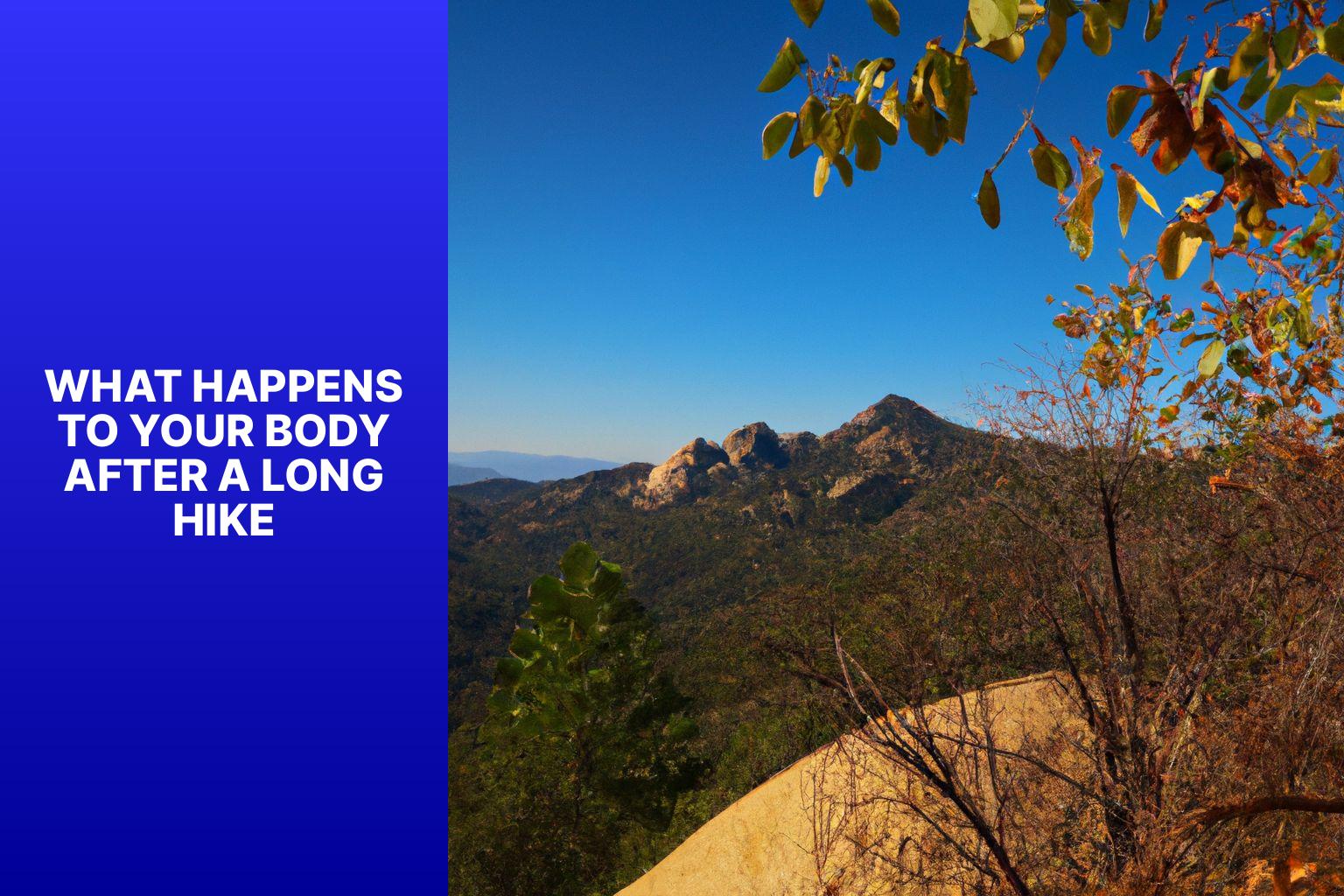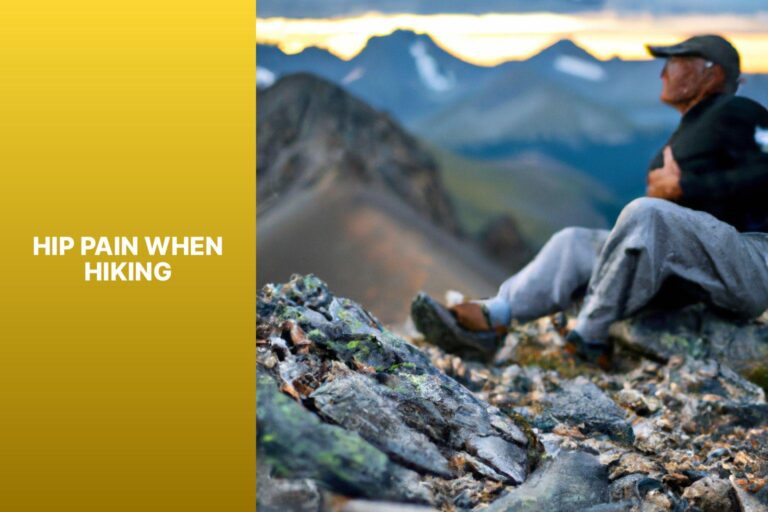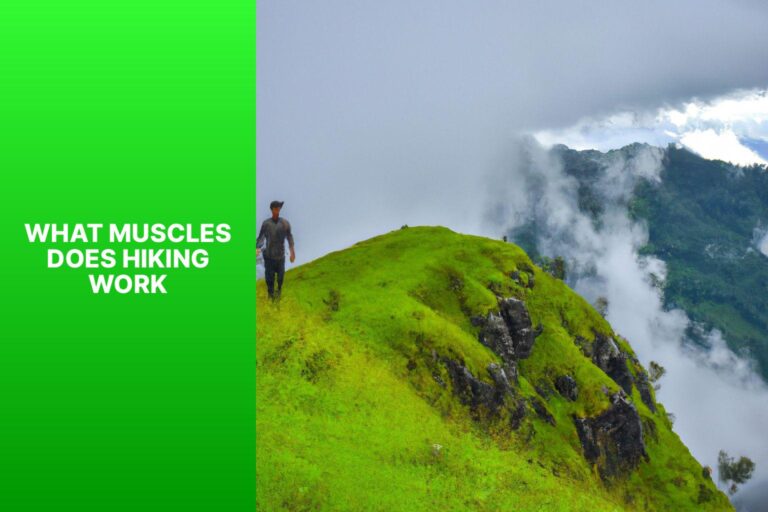What Happens to Your Body After a Long Hike
Embarking on a long hike in nature is not only a physically challenging adventure but also a journey that brings about various changes to your body. The preparation, the physical exertion, and the recovery all play a role in the impact on your body. There are several important factors to consider when preparing for a long hike to ensure a safe and enjoyable experience. These include choosing the right trail, getting in shape through physical conditioning, and packing essential items for the hike.
During a long hike, your body undergoes various physical changes that are worth noting. Increased heart rate and blood flow are common during hiking, which helps improve cardiovascular health. The physical demands of hiking contribute to weight loss and improved overall fitness.
Intense physical activity can take a toll on your muscles and joints. Muscle fatigue and soreness are common after a long hike, and inflammation and joint pain can also occur. It’s important to be aware of these potential effects and take measures to prevent and manage them.
Long hiking can also lead to changes in energy levels and metabolism. The increased energy expenditure during hiking can contribute to higher calorie burn and weight loss. Hiking can impact metabolic rate, leading to improved metabolism and energy metabolism regulation.
The benefits of hiking are not limited to the physical realm but extend to mental health as well. Spending time in nature while hiking can reduce stress and anxiety, boost mood, and enhance mental clarity. It provides an opportunity for relaxation and mindfulness, which can have a positive impact on mental well-being.
Proper recovery after a long hike is crucial. Hydration and replenishing nutrients are essential to restore your body’s balance. Rest and adequate sleep are needed to allow your muscles and joints to recover fully. Stretching and post-hike exercises can aid in muscle recovery and prevent stiffness.
Understanding the changes that occur in your body during and after a long hike can help you prepare, adapt, and recover effectively. By taking the necessary precautions and practicing self-care, you can fully enjoy the experience while minimizing any potential negative impact on your body.
Key takeaway:
- Hiking offers physical benefits: Long hikes increase heart rate and blood flow, leading to improved cardiovascular health, weight loss, and increased energy expenditure.
- Hiking has positive effects on mental health: Long hikes reduce stress, anxiety, and promote improved mood and mental clarity.
- Proper preparation and recovery are crucial: Choosing the right trail, getting in shape, packing essentials, hydrating, resting, and stretching after the long hike are vital for a successful hiking experience.
Preparation for a Long Hike
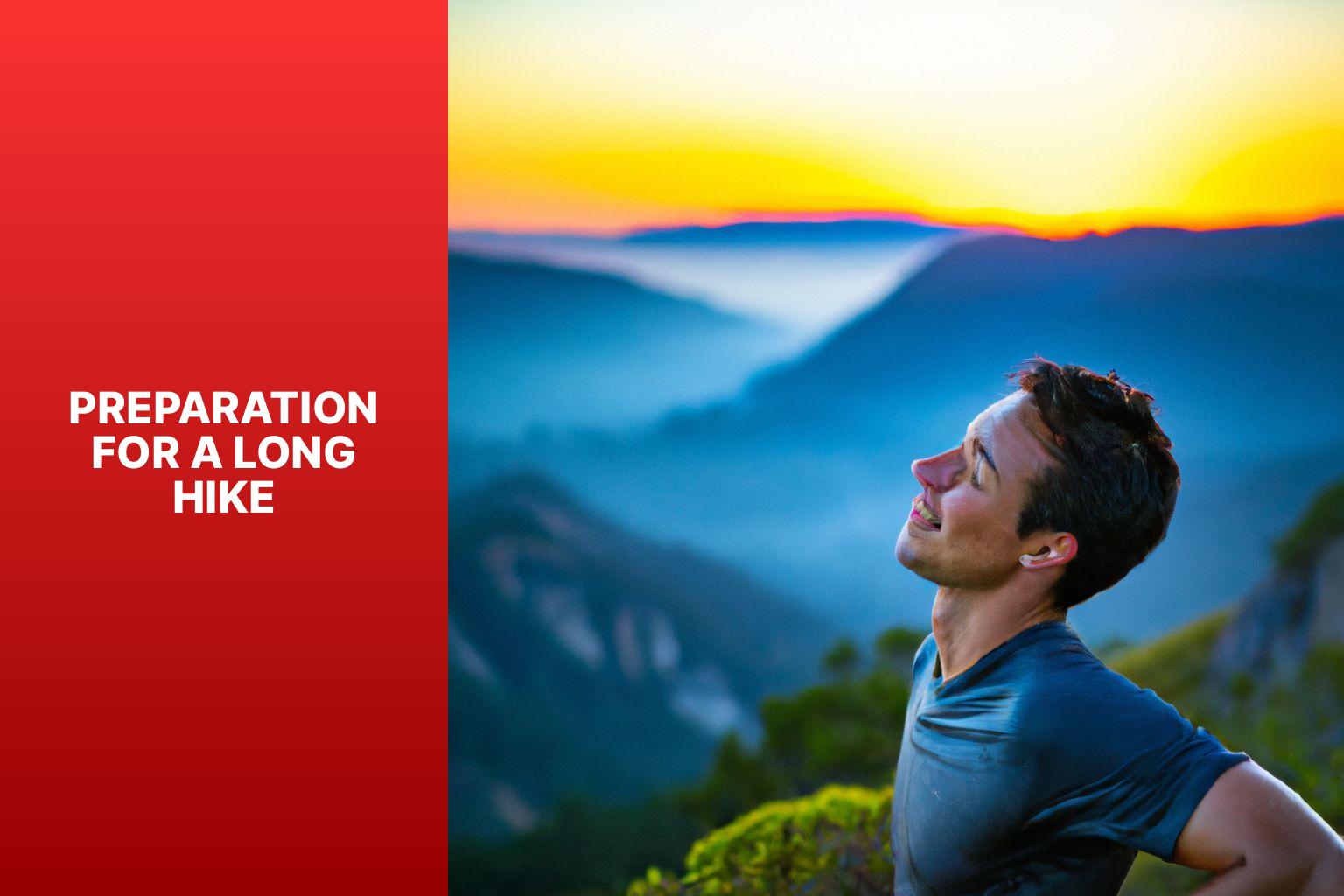
Photo Credits: Jasonexplorer.Com by Philip Roberts
Preparing for a long hike is essential to ensure a safe and enjoyable adventure. In this section, we will explore key elements that contribute to a successful hiking experience. From selecting the perfect trail that matches your skill level to getting physically fit for the journey ahead, and packing the necessary essentials, we will cover everything you need to know to get ready for a memorable hike in the great outdoors. Lace up your boots and let’s dive into the world of hiking preparation!
Choosing the Right Trail
When choosing a trail for a long hike, it is important to consider several factors:
1. Difficulty Level: Assess your fitness level and hiking experience to determine the appropriate difficulty level for you. Take into account factors like elevation gain, steepness, and terrain.
2. Trail Length: Determine the distance you are capable and willing to hike. Look for trails that match your fitness level and time constraints.
3. Scenery and Environment: Decide if you prefer hiking through forests, mountains, coastal areas, or arid landscapes. Choose a trail that offers the scenery and environment you prefer.
4. Trail Maintenance: Research the trail’s maintenance history. Choose well-maintained trails for a safer and more enjoyable hiking experience.
5. Safety Measures: Consider safety features such as trail markers, emergency access, and cellphone reception. Choose trails that prioritize safety.
6. Weather Conditions: Check the typical weather conditions during your hike. Choose trails that are suitable for the expected weather to ensure comfort and safety.
7. Permits and Regulations: Some trails require permits or have specific regulations. Make sure to obtain any necessary permits and follow the rules of your chosen trail.
Remember, selecting the right trail is crucial for a successful and enjoyable long hike. Take into account the difficulty level, trail length, scenery, maintenance, safety measures, weather conditions, and any necessary permits or regulations. Happy hiking!
FACT: The Appalachian Trail, which stretches from Georgia to Maine in the United States, spans approximately 2,193 miles. It offers hikers a diverse range of landscapes and is a popular choice for thru-hikers.
Getting in Shape
Getting in shape is crucial before embarking on a long hike. It is important to prepare your body for the physical demands of hiking to ensure an enjoyable and successful experience.
1. To start, engage in regular exercise to improve overall fitness. You can incorporate activities like walking, jogging, cycling, or swimming to build endurance and strengthen muscles.
2. Gradually increase the intensity of your workouts. Consider incorporating hill or stair climbing, interval training, or carrying a backpack with weight to simulate hiking conditions. This will help you prepare even better.
3. Focus on improving your cardiovascular fitness by aiming for at least 150 minutes of moderate-intensity aerobic exercise weekly. This will boost your heart rate and blood flow, making your body more efficient for hiking.
4. Work on building strength and endurance in your leg muscles, core, and upper body. You can do exercises like squats, lunges, planks, and push-ups. Include exercises that mimic hiking movements, such as step-ups or stair climbing, to enhance endurance.
5. It is equally important to maintain a healthy diet. Make sure to eat a balanced diet that is rich in nutrients and provides enough calories to support your physical activity. Stay hydrated and ensure you have sufficient energy for your hikes.
Remember to listen to your body and gradually get in shape. It is always a good idea to consult a healthcare professional before starting any new exercise regimen, especially if you have underlying medical conditions. Being in shape will prepare you to tackle the challenges of a long hike.
Packing Essential Items
When preparing for a long hike, it is crucial to pack all the essential items for a safe and comfortable journey. It is important to consider packing the following items:
1. Backpack: It is recommended to choose a sturdy and comfortable backpack with adjustable straps and multiple compartments for better organization.
2. Water: To stay hydrated, it is advisable to pack at least one liter of water per hour of hiking.
3. Snacks: To maintain energy levels, it is good to bring lightweight, high-energy snacks like trail mix, energy bars, and dried fruits.
4. Navigational tools: It is essential to carry a map, compass, or GPS device to navigate the trail accurately.
5. First aid kit: It is crucial to have a basic first aid kit containing bandages, antiseptic wipes, adhesive tape, and pain relievers.
6. Extra clothing: It is recommended to pack extra layers of clothing, including a waterproof jacket, windbreaker, hat, and gloves.
7. Sun protection: To protect against the sun, it is important to bring sunscreen, sunglasses, and a hat.
8. Multi-tool: It is advisable to carry a Swiss Army knife or multi-tool for various tasks that may arise.
9. Emergency whistle: Having an emergency whistle is important for attracting attention in case of emergencies or getting lost.
By incorporating these essential items into your packing, you can ensure that you are well-prepared for your hike and have a safe and enjoyable outdoor experience.
Physical Changes during a Long Hike
During a long hike, your body undergoes incredible transformations, experiencing physical changes that impact your overall well-being. Get ready to discover what happens inside you as we explore the increased heart rate and blood flow, weight loss, and improved cardiovascular health. Lace up your boots and join us on this journey to uncover the amazing effects of a challenging hiking adventure on your body.
Increased Heart Rate and Blood Flow
During a long hike, your body experiences an increase in heart rate and blood flow. This is a natural response to physical activity. As you hike, your heart pumps harder and faster to supply oxygen and nutrients to your muscles and organs.
The increased heart rate indicates that your cardiovascular system is working efficiently. It allows for improved circulation, delivering oxygen and nutrients to your muscles to sustain the activity.
Increased blood flow transports more oxygen to your muscles, enabling them to function optimally. This enhances endurance and performance during your hike. Increased blood flow promotes the removal of waste products, like carbon dioxide, from the muscles.
The magnitude of the increase in heart rate and blood flow varies based on your fitness level, hike intensity, and environmental conditions. Regular hiking can further cultivate cardiovascular health and enhance its ability to handle increased heart rate and blood flow.
To support your cardiovascular system during a long hike, it is crucial to stay hydrated and maintain a balanced diet rich in nutrients and electrolytes. Proper hydration and nutrition contribute to optimal heart function and blood flow, improving your overall hiking experience.
Weight Loss
Weight loss is a common result of long hikes. During a long hike, the body burns a significant number of calories, contributing to weight loss. On average, a person can burn between 400-700 calories per hour while hiking, depending on factors like speed, terrain, and weight. Hiking activates various muscles in the body, including the legs, core, and upper body, helping to build muscle and increase overall calorie burn. The body continues to burn calories at an elevated rate even after the hike is over, thanks to the afterburn effect. This process, also known as excess post-exercise oxygen consumption (EPOC), helps the body restore itself to its pre-exercise state. Regular long hikes can contribute to sustained weight loss by creating a calorie deficit and increasing overall physical activity levels. It is important to consider that weight loss results can vary among individuals and are influenced by factors such as diet, genetics, and lifestyle. Prioritizing safety, starting at an appropriate fitness level, and listening to your body’s needs are essential during a hike for weight loss. Adequate hydration and nutrition are also crucial for maintaining energy levels and supporting overall health while engaging in long hikes for weight loss.
Improved Cardiovascular Health
Long hikes greatly contribute to the improvement of cardiovascular health by strengthening the heart and enhancing blood circulation. By incorporating regular long hikes into your routine, you can experience a multitude of benefits for your heart health.
One of the specific advantages of long hikes is the increase in heart rate. This increase in heart rate actually serves to strengthen the heart muscle, leading to improved cardiovascular fitness.
Long hikes result in enhanced blood flow as the heart pumps more blood throughout the body. This improved blood circulation helps to maintain healthy blood pressure levels, ultimately reducing the risk of developing cardiovascular diseases.
Another positive effect of regular long hikes is the reduction of the resting heart rate over time. As your heart becomes healthier, it can efficiently pump blood, thereby minimizing strain on the cardiovascular system.
Long hikes can lower the risk of heart disease. By actively improving cardiovascular health, the likelihood of developing conditions such as high blood pressure, cholesterol imbalances, and arterial sclerosis is diminished.
For individuals looking to further optimize their cardiovascular health during long hikes, incorporating interval training is highly recommended. By alternating between moderate and high-intensity intervals, you can effectively challenge your cardiovascular system. It is crucial to gradually increase the intensity to avoid overexertion.
Effects of Long Hiking on Muscles and Joints
After a long hike, your body goes through some incredible transformations. Let’s explore the effects of those demanding treks on your muscles and joints. From muscle fatigue and soreness to potential inflammation and joint pain, we’ll dive into the impact that long hikes can have on your body. So fasten your boots and get ready to discover the toll these adventures can take on your physical well-being.
Muscle Fatigue and Soreness
Muscle fatigue and soreness are common during a long hike, as a result of the repeated contractions and exertion of the muscles. When embarking on a hike, there are several important factors to consider that can impact the degree of muscle fatigue and soreness experienced.
The intensity and duration of the hike play a significant role. Hiking on steep terrain or for extended periods puts additional strain on the muscles, leading to increased fatigue and soreness.
The repetitive movements and stress on the muscles during a hike can result in small tears in the muscle fibers, known as muscle microtears. These microtears can cause muscle soreness and stiffness, particularly in the days following the hike.
Delayed onset muscle soreness (DOMS) is another common condition that can occur a day or two after exercise. DOMS is characterized by muscle tenderness, stiffness, and a reduced range of motion. It is believed to be caused by inflammation and the muscle repair processes that take place after intense exercise.
To alleviate muscle fatigue and soreness, it is crucial to employ appropriate recovery strategies. These strategies can include gentle stretching, foam rolling, allowing for ample rest, and maintaining proper hydration and nutrition. Additionally, applying ice or taking over-the-counter pain relievers can help manage discomfort.
A gradual progression in the intensity and duration of hikes can also contribute to reducing the severity of muscle fatigue and soreness over time. Regular training to build strength and endurance is also beneficial in preparing the muscles for the demands of long hikes.
Research has shown that consuming protein-rich foods after exercise can promote muscle recovery and diminish muscle soreness. Including lean meats, eggs, yogurt, and nuts in post-hike meals can aid in muscle repair and alleviate soreness.
Inflammation and Joint Pain
Inflammation and joint pain often occur while hiking, due to repetitive stress on the joints and muscles. The body’s natural inflammatory response to injury or overuse can also contribute to these symptoms.
Excessive or chronic inflammation can lead to discomfort and pain in the joints. Joint pain can also result from the worn-out cartilage, which normally cushions the joints and allows for smooth movement.
To alleviate inflammation and joint pain during a long hike, it is important to consider the following strategies:
1. Warm-up and stretching: Prior to beginning your hike, engage in gentle exercises and stretches to warm up your muscles and joints. This enhances blood flow and flexibility, reducing the risk of injury and inflammation.
2. Supportive footwear and equipment: Wear appropriate hiking shoes or boots that provide ample support and cushioning, ensuring reduced impact on your joints. The use of trekking poles can also distribute the load and alleviate stress on the lower body.
3. Rest and recovery: Take regular breaks throughout your hike to allow your body to rest and recover. This aids in reducing inflammation and preventing further joint pain. Utilize these breaks to stretch and stay hydrated.
4. Anti-inflammatory measures: Apply ice or cold packs to affected joints after hiking to reduce inflammation. Over-the-counter anti-inflammatory medications can also offer temporary relief.
If you encounter severe or persistent joint pain while hiking, pay attention to your body’s signals and seek medical attention if necessary. Taking care of your joints and managing inflammation will ensure a more enjoyable and pain-free hiking experience.
Changes in Energy Levels and Metabolism

Photo Credits: Jasonexplorer.Com by Bradley Jackson
When you embark on a long hike, incredible changes occur within your body that affect your energy levels and metabolism. Brace yourself, because we’re about to explore the fascinating world of what happens to your body during and after a thrilling hike. We’ll discover the increased energy expenditure that comes with each step, as well as the intriguing changes in metabolic rate that accompany this adventurous journey. Get ready to be amazed by the wondrous transformations that occur as you conquer those trails!
Increased Energy Expenditure
Increased energy expenditure is a natural occurrence during a long hike. Your body naturally burns more calories during the hike in comparison to your normal daily activities. The duration, intensity, and terrain of the hike all play a role in determining the amount of energy you expend. On average, hiking can burn anywhere from 400 to 700 calories per hour, depending on these factors. Uphill hiking or navigating rough terrains requires even more effort and results in a higher energy expenditure.
In addition to the hike itself, the act of carrying a backpack further increases your energy expenditure. Studies estimate that wearing a backpack can increase energy expenditure by approximately 5-7% compared to hiking without one.
The increased energy expenditure that occurs during a long hike offers numerous benefits for weight management and overall fitness. It assists in burning excess calories, which is key for weight loss when in a calorie deficit. It enhances cardiovascular health and improves endurance.
To support the increased energy expenditure during a hike, it is crucial to properly fuel your body. This involves consuming a well-balanced diet that includes adequate amounts of carbohydrates, proteins, and healthy fats before, during, and after the hike. Staying adequately hydrated by drinking plenty of water throughout the hike is absolutely essential.
Changes in Metabolic Rate
During a long hike, your metabolic rate changes to meet your body’s increased energy demands and maintain its functioning. Here are some key points to consider:
1. Increased Energy Expenditure: Long hikes require more energy to power your muscles and sustain physical activity. This leads to a higher metabolic rate as your body burns more calories to fuel your movements.
2. Changes in Caloric Needs: The increase in metabolic rate during a long hike varies depending on factors like body weight, hiking intensity, and duration. On average, a person can burn around 400-600 calories per hour during a moderate hiking pace.
3. Fat Utilization: With an increased metabolic rate during a long hike, your body taps into its fat stores for energy. This can contribute to weight loss and improved body composition over time.
4. Enhanced Metabolic Efficiency: Regular long hikes can cultivate a more efficient metabolism, helping your body optimize energy utilization and maintain a healthy weight. This efficiency boost has long-term benefits for overall metabolic health.
It’s worth noting that individual metabolic responses may vary depending on factors like fitness level, age, and genetics. Stay properly fueled and hydrated during your hike to support your body’s energy needs.
Pro-tip: To optimize your metabolic rate during a long hike, incorporate interval training and resistance exercises into your regular fitness routine. This can enhance your overall metabolic efficiency and endurance on the trail.
Effects on Mental Health
After a long and invigorating hike, have you ever wondered about the impact it has on your mental well-being? In this section, we’ll uncover the fascinating effects of hiking on mental health. Discover how it can reduce stress and anxiety, boosting your mood and providing mental clarity like never before. Strap on your hiking boots and prepare to explore the incredible benefits that await you on the trails.
Reduced Stress and Anxiety
Reduced stress and anxiety are benefits of long hikes. Here are reasons why long hikes can reduce stress and anxiety:
1. Nature’s calming effect: Spending time in nature calms the mind and body. The peaceful surroundings, fresh air, and natural beauty reduce stress and anxiety.
2. Physical activity: Engaging in physical activity releases endorphins, feel-good chemicals in the brain. Long hikes involve extended periods of walking or hiking, which release endorphins and alleviate stress and anxiety.
3. Mindfulness and relaxation: Long hikes allow detachment from daily stressors and promote being present in the moment. The rhythmic movement of walking and the serene surroundings foster mindfulness and relaxation, reducing stress and anxiety.
4. Social connection: Long hikes can be done with friends or family, fostering a sense of belonging and support. Connecting with others and sharing the experience helps reduce stress and anxiety.
To experience reduced stress and anxiety during long hikes, consider these suggestions:
1. Choose scenic trails or peaceful locations.
2. Practice deep breathing exercises or meditation while hiking.
3. Engage in positive self-talk and focus on the present moment.
4. Disconnect from technology and embrace the natural surroundings.
5. Consider joining hiking groups or organizing hikes with friends for social connection.
Improved Mood and Mental Clarity
Improved mood and mental clarity are benefits of long hiking. Long hikes have the potential to enhance your mood and mental clarity in several ways.
One way is through boosted endorphins, which are natural chemicals that can improve your mood and create a sense of well-being. Another way is through elevated serotonin levels, as hiking increases serotonin production, a neurotransmitter that regulates mood and promotes feelings of calmness and happiness. This can be especially beneficial for reducing symptoms of depression and anxiety.
Long hikes can help reduce stress by allowing you to disconnect from daily stressors and immerse yourself in nature, promoting relaxation. Spending time in nature and being physically active during long hikes can also heighten your mental clarity by clearing your mind and improving focus. The fresh air, beautiful scenery, and exercise stimulate cognitive function, making you more mentally alert.
Long hikes inspire creativity by providing a change of scenery and freeing your mind from daily routines. This increased creativity can help generate new ideas and solutions. Long hikes also encourage mindfulness by allowing you to be fully present in the moment, cultivating a sense of mindfulness that can improve your overall mental well-being.
Embarking on long hikes offers a holistic experience that benefits not only your physical health but also enhances your mood and mental well-being. So, the next time you hit the trail, be prepared for the positive impact it can have on your mind.
Recovery after a Long Hike
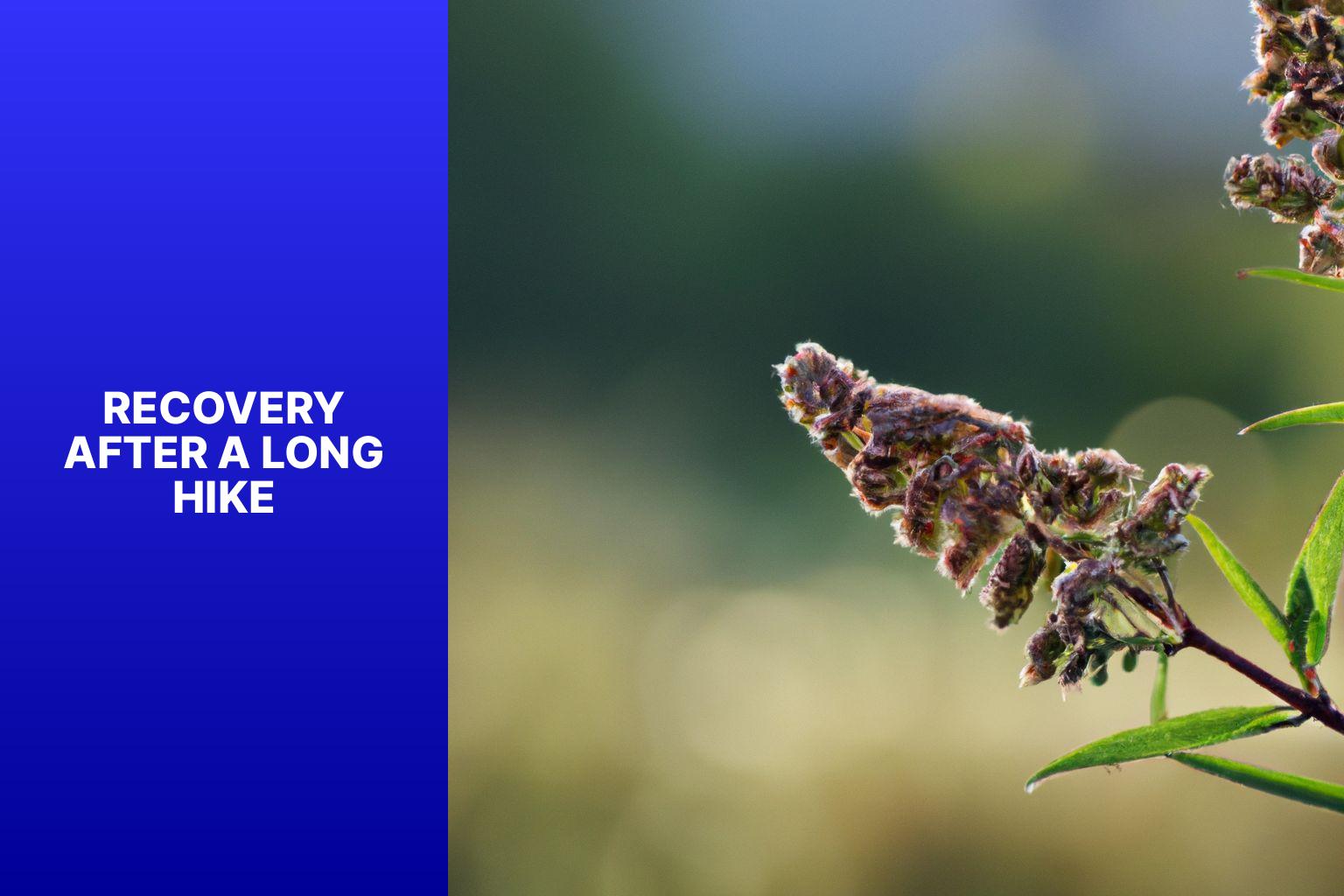
Photo Credits: Jasonexplorer.Com by Jerry Anderson
After a long hike, it’s crucial to prioritize recovery to ensure your body bounces back quickly. In this section, we’ll uncover the secrets to effective recovery. We’ll explore the importance of hydration and replenishing nutrients, the benefits of rest and getting adequate sleep, and the power of stretching and post-hike exercises. By implementing these strategies, you’ll be able to optimize your body’s recovery process and get back on the trails feeling rejuvenated in no time.
Hydration and Replenishing Nutrients
Hydration and replenishing nutrients are essential during a long hike to prevent dehydration and maintain bodily functions. It is important to consistently drink water throughout the hike, consuming at least 8 ounces (236 ml) every hour. Electrolytes, which are vital for hydration, should be replenished to maintain proper muscle and nerve functioning. To replenish these electrolytes, you can consume sports drinks or electrolyte tablets.
It is also important to include carbohydrates in your hiking snacks to provide sustained energy. Pack snacks rich in carbohydrates such as granola bars, trail mix, or energy gels. Additionally, protein is necessary for muscle repair and recovery after strenuous activity. Make sure to include protein-rich foods like nuts, jerky, or protein bars in your hiking pack.
To combat oxidative stress from physical exertion, it is beneficial to have antioxidants from fruits and vegetables. Pack dried fruits or pre-cut vegetables to obtain antioxidants along the way. As a pro-tip, bring a water filtration system or water purification tablets for optimal hydration, especially in areas with limited clean water sources. This will allow you to replenish your water supply safely.
Remember, proper hydration and nutrient replenishment are crucial for a successful and enjoyable long hike.
Rest and Adequate Sleep
Rest and Adequate Sleep are necessary for recovery after a long hike. Your muscles and joints are strained during a hike, so rest is important for them to recover. Sleep rejuvenates and heals the body, especially after physical exertion.
Rest relaxes muscles and reduces fatigue and soreness from the hike. It also reduces inflammation and joint pain, helping the body recover faster. Rest replenishes energy levels and restores the body’s metabolic balance.
Adequate sleep is crucial for tissue repair and growth, promoting the release of growth hormones and enhancing immune function. Quality sleep improves mood and mental clarity, preparing you for your next adventure.
To ensure rest and adequate sleep after a long hike, find a comfortable place to rest and use appropriate bedding and a sleeping bag. Avoid caffeine and stimulating activities before bedtime, as they can interfere with sleep quality. Allow yourself enough time to fully rest and recover before engaging in strenuous activities again.
Pro Tip: To enhance your sleep quality, use earplugs and an eye mask to block out noise and light, creating a peaceful sleeping environment.
Stretching and Post-hike Exercises
After a long hike, it is essential to include stretching and post-hike exercises to aid in muscle recovery and prevent injuries. Here are the steps to consider:
1. Cool Down: Walk at a slower pace after finishing your hike to gradually lower your heart rate and cool down your body.
2. Stretch Major Muscles: Focus on stretching major muscle groups like calves, thighs, hamstrings, quads, and glutes. Hold each stretch for 15-30 seconds without bouncing.
3. Foam Rolling: Use a foam roller to release tension and tightness in your muscles. Roll back and forth over the sore or tight areas for 1-2 minutes.
4. Strengthen Core: Engage in core exercises such as planks or mountain climbers to strengthen your abdominal muscles and improve stability.
5. Gentle Yoga: Practice gentle yoga poses to stretch, lengthen muscles, and promote relaxation and flexibility.
6. Massage or Self-Massage: Consider getting a professional massage or using a massage tool to ease muscle tension or knots.
7. Hydrate and Replenish: Drink plenty of water and consume a nutritious snack or meal to replenish energy levels and aid in muscle recovery.
True story:
After completing a challenging 10-mile hike, I dedicated time to stretching and post-hike exercises. I focused on stretching my calves, hamstrings, and quads which felt tight and fatigued. I used a foam roller to release muscle tension, finding it soothing. To aid in recovery, I performed core exercises and practiced yoga poses, which helped me relax and lengthen my muscles. The next day, I felt refreshed and ready for my next adventure, thanks to incorporating stretching and post-hike exercises into my routine.
Frequently Asked Questions
What happens to your body after a long hike?
After a long hike, your body may experience physical aches, soreness, and fatigue. Your muscles may feel sore and tired, and you may also experience blisters on your feet. It’s important to engage in post-hike recovery activities to alleviate these symptoms and promote faster recovery.
What are some proactive strategies for post-hike recovery?
There are several proactive strategies for post-hike recovery, including using ergonomic support such as fitted boots and hiking poles to reduce strain and fatigue. Applying a gel ice pack to hot spots on the body can help cool them down. Using compression clothing, like compression socks or calf sleeves, can improve endurance and decrease stiffness and soreness.
How can I speed up my recovery after hiking?
To speed up your recovery after hiking, it’s important to take a few key steps. First, make sure to stay hydrated by drinking plenty of fluids during and after your hike. Adding powdered electrolytes to your water can provide necessary nutrients and prevent cramping. Stretching major muscle groups after a hike can also speed up recovery and make you feel better.
What are some pain relief options for post-hike soreness?
If you’re experiencing post-hike soreness, there are various pain relief methods you can consider. Over-the-counter pain relief medication, like ibuprofen, can provide rapid relief. It’s important to use them cautiously and avoid regular use of anti-inflammatories. Other pain relief options include using foam rollers or small, hard objects to apply pressure to sore spots, or using a tennis ball for self-massage.
How can I take care of my feet after hiking?
Feet care is crucial after hiking to prevent discomfort and promote faster recovery. To take care of your feet, tape sensitive spots before your hike to prevent blisters. Afterward, give your feet some TLC by flexing, stretching, and massaging them. You can also soak them in a warm bath with Epsom salts to enhance healing.
What is the importance of an active rest day after hiking?
After a strenuous hike, it’s important to give your body time to rest and recover. Taking an active rest day can help in two ways. First, it allows your muscles to recover and repair. Second, it helps to prevent muscle stiffness and soreness by engaging in gentle activities such as stretching or taking a short, easy walk or bike ride.

